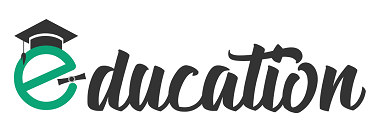Direct Unsubsidized Loans are a pivotal component of the federal financial aid landscape, providing students with a means to fund their education independently of financial need. These loans, unlike their subsidized counterparts, begin accruing interest immediately after disbursement, which can significantly affect the overall cost of borrowing.
As we examine the intricacies of Direct Unsubsidized Loans, it is crucial to explore the eligibility criteria that determine who can benefit from these loans, the factors influencing the interest rates, and the variety of repayment options available to borrowers. Navigating these aspects is essential for any prospective or current student seeking to manage their educational debts effectively.
As we progress, a closer look at these elements will unveil how students can strategize their approach to borrowing and repay their loans in the most financially prudent manner, ultimately shaping their financial future post-graduation.
Key Takeaways
- Direct Unsubsidized Loans are available to undergraduate, graduate, and professional students without the need to demonstrate financial hardship.
- Borrowers are responsible for paying the interest on the loan from the time of disbursement, and the interest can be capitalized, increasing the loan amount.
- To apply for Direct Unsubsidized Loans, students must complete the FAFSA, be enrolled at least half-time in an accredited institution, and be pursuing a degree or recognized educational credential.
- There are various repayment plan options available, including standard repayment, graduated repayment, and income-driven repayment plans, which can affect the total amount paid and monthly payments. Additionally, loan consolidation is an option for simplifying repayment by combining multiple loans into one.
Understanding Direct Unsubsidized Loans
Direct Unsubsidized Loans are a type of federal student loan available to undergraduate, graduate, and professional students, without the need for demonstrating financial hardship. Unlike subsidized loans, the borrower is responsible for the interest that accrues on unsubsidized loans from the time the loan is disbursed until it is paid in full. This means that if a student chooses not to pay the interest while in school or during grace periods and deferment or forbearance periods, the interest will capitalize, adding to the principal amount of the loan.
Eligibility for Direct Unsubsidized Loans does not depend on financial need, but students must still complete the Free Application for Federal Student Aid (FAFSA) to apply. The amount a student can borrow each year varies based on their year in school and whether they are classified as a dependent or independent student. The aggregate loan limit also increases for graduate and professional students.
Interest rates for Direct Unsubsidized Loans are set by federal law and are fixed for the life of the loan. These loans also come with several repayment plan options, including income-driven repayment plans that calculate monthly payments based on the borrower’s income and family size.
Eligibility Requirements
To qualify for a Direct Unsubsidized Loan, students must meet several criteria. These loans are designed to help cover the cost of higher education for undergraduate, graduate, and professional students. Unlike subsidized loans, unsubsidized loans do not require students to demonstrate financial need. However, there are specific eligibility requirements that must be adhered to.
Here is a list of the principal eligibility criteria for a Direct Unsubsidized Loan:
- Enrollment Status: Applicants must be enrolled at least half-time in an accredited institution participating in the Direct Loan Program.
- Educational Level: Students must be pursuing a degree, certificate, or other recognized educational credential.
- FAFSA Submission: Borrowers must complete and submit the Free Application for Federal Student Aid (FAFSA) form to be considered for an unsubsidized loan.
In addition to these requirements, students must maintain satisfactory academic progress as defined by their institution, possess a valid Social Security number, and be a U.S. citizen or an eligible non-citizen. Meeting these conditions does not automatically guarantee a loan, as other factors, including previous loan limits and academic performance, may influence loan approval.
Determining Interest Rates
Interest rates on Direct Unsubsidized Loans are set by federal law and differ for undergraduate, graduate, and professional students. For undergraduates, the rates are generally lower compared to those for graduate and professional students. These rates are fixed for the life of the loan, meaning the rate determined at the time of disbursement will remain constant throughout the repayment period.
The interest rates are determined annually and are tied to the 10-year Treasury note with a fixed add-on percentage that varies depending on the level of education. The rates are typically announced each year in May or June after the Treasury Department holds its last auction of 10-year notes in May. It’s important to note that there is a cap on how high these rates can go, which provides some protection against extreme fluctuations in the market.
When interest begins to accrue on a Direct Unsubsidized Loan—immediately upon disbursement—borrowers should be aware that this interest will capitalize, meaning any unpaid interest is added to the principal balance. This capitalization occurs when borrowers enter repayment after periods of deferment or forbearance and after the grace period post-graduation. Borrowers must consider this when evaluating the long-term cost of their loan.
Repayment Plan Options
Understanding the accrual and capitalization of interest on Direct Unsubsidized Loans is critical for borrowers, who must also navigate the variety of repayment plan options available to manage their debt effectively over time.
The federal government offers several repayment plans to accommodate different financial situations, each with its unique terms and conditions. Choosing the right plan can significantly affect the total amount paid over the life of the loan, as well as the size of monthly payments.
Here are the primary repayment plan options for Direct Unsubsidized Loans:
- Standard Repayment Plan: This plan spans up to 10 years, featuring fixed monthly payments that ensure the loan is fully paid off within that timeframe.
- Graduated Repayment Plan: Initially, payments are lower and then increase every two years. This plan is designed to match borrowers’ expected income growth and also has a term of up to 10 years.
- Income-Driven Repayment Plans: These plans calculate monthly payments based on the borrower’s income and family size, potentially extending the loan term up to 20 or 25 years. The main types include Revised Pay As You Earn (REPAYE), Pay As You Earn (PAYE), Income-Based Repayment (IBR), and Income-Contingent Repayment (ICR).
Borrowers should carefully consider how their choice of repayment plan will impact their long-term financial goals and monthly budget before making a decision.
→ https://yelofunding.com/#how-it-works
Loan Management Strategies
Effective loan management strategies are essential for minimizing the financial burden of Direct Unsubsidized Loans and ensuring timely repayment. Borrowers should be proactive in understanding the terms of their loans and implementing practices that will facilitate the repayment process without compromising their financial stability.
One critical strategy is to make payments while still in school or during the grace period, even though these are not required. This reduces the overall interest that accrues, given that interest on unsubsidized loans compounds over time. Additionally, setting up automatic payments can not only ensure payments are made on time but may also qualify borrowers for an interest rate reduction with some loan servicers.
Creating a budget that prioritizes loan repayment is crucial. It is important to cut unnecessary expenses and consider additional sources of income that can be dedicated to loan payments. Furthermore, understanding the available repayment plans and selecting the one that best fits personal financial circumstances can greatly affect the total amount paid over the life of the loan.
The table below outlines some key strategies for managing Direct Unsubsidized Loans:
| Strategy | Description |
| Make interest payments | Pay interest during school to reduce compounding. |
| Enroll in AutoPay | Set up automatic payments to avoid missed payments. |
| Budget for repayment | Prioritize loan payments in your budget. |
| Consider refinancing | Explore refinancing for potentially lower rates. |
| Stay informed | Keep up with changes to loan terms and options. |
Conclusion
Direct Unsubsidized Loans offer a critical avenue for financing higher education, accessible to a wide range of students regardless of financial need. With interest accruing from disbursement, it is paramount that borrowers understand the implications of various repayment plans.
An intriguing statistic reveals that in the 2020-2021 academic year, 42.9% of all undergraduate students took out federal student loans, underscoring the importance of such loans in facilitating access to higher education.
Effective loan management strategies are essential to navigate this financial commitment responsibly.



